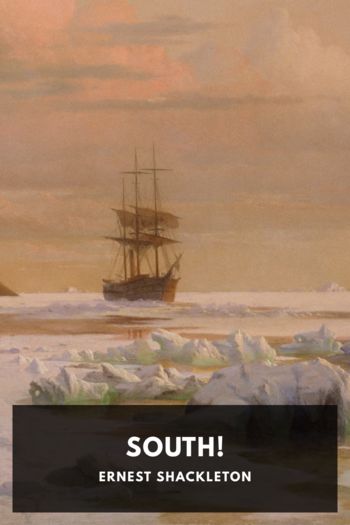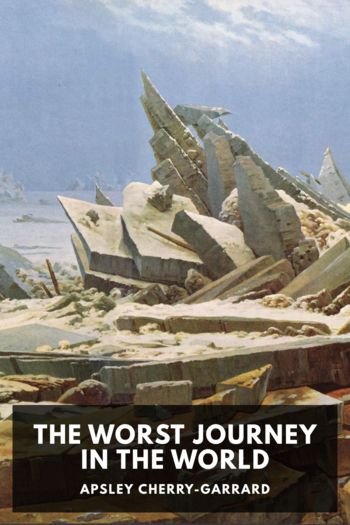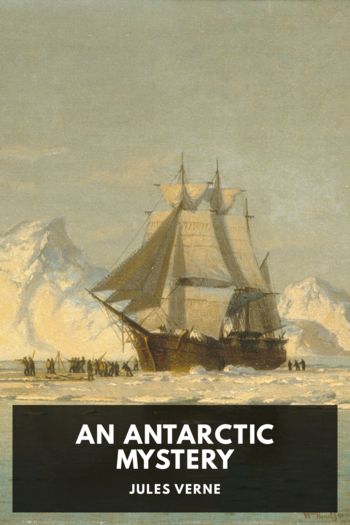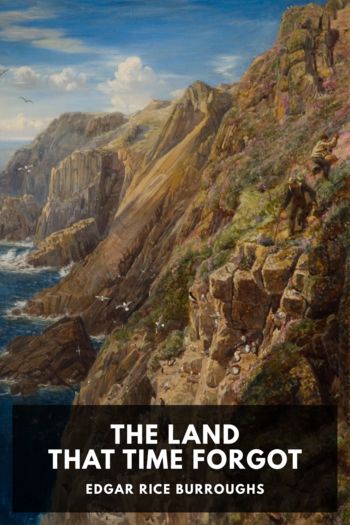South!, Ernest Shackleton [good books to read in english TXT] 📗

- Author: Ernest Shackleton
Book online «South!, Ernest Shackleton [good books to read in english TXT] 📗». Author Ernest Shackleton
There was a lull in the bad weather on April 21, and the carpenter started to collect material for the decking of the James Caird. He fitted the mast of the Stancomb Wills fore and aft inside the James Caird as a hogback and thus strengthened the keel with the object of preventing our boat “hogging”—that is, buckling in heavy seas. He had not sufficient wood to provide a deck, but by using the sledge-runners and box-lids he made a framework extending from the forecastle aft to a well. It was a patched-up affair, but it provided a base for a canvas covering. We had a bolt of canvas frozen stiff, and this material had to be cut and then thawed out over the blubber-stove, foot by foot, in order that it might be sewn into the form of a cover. When it had been nailed and screwed into position it certainly gave an appearance of safety to the boat, though I had an uneasy feeling that it bore a strong likeness to stage scenery, which may look like a granite wall and is in fact nothing better than canvas and lath. As events proved, the covering served its purpose well. We certainly could not have lived through the voyage without it.
Another fierce gale was blowing on April 22, interfering with our preparations for the voyage. The cooker from No. 5 tent came adrift in a gust, and, although it was chased to the water’s edge, it disappeared for good. Blackborrow’s feet were giving him much pain, and McIlroy and Macklin thought it would be necessary for them to operate soon. They were under the impression then that they had no chloroform, but they found some subsequently in the medicine-chest after we had left. Some cases of stores left on a rock off the spit on the day of our arrival were retrieved during this day. We were setting aside stores for the boat journey and choosing the essential equipment from the scanty stock at our disposal. Two ten-gallon casks had to be filled with water melted down from ice collected at the foot of the glacier. This was a rather slow business. The blubber-stove was kept going all night, and the watchmen emptied the water into the casks from the pot in which the ice was melted. A working party started to dig a hole in the snow-slope about forty feet above sea-level with the object of providing a site for a camp. They made fairly good progress at first, but the snow drifted down unceasingly from the inland ice, and in the end the party had to give up the project.
The weather was fine on April 23, and we hurried forward our preparations. It was on this day I decided finally that the crew for the James Caird should consist of Worsley, Crean, McNeish, McCarthy, Vincent, and myself. A storm came on about noon, with driving snow and heavy squalls. Occasionally the air would clear for a few minutes, and we could see a line of pack-ice, five miles out, driving across from west to east. This sight increased my anxiety to get away quickly. Winter was advancing, and soon the pack might close completely round the island and stay our departure for days or even for weeks, I did not think that ice would remain around Elephant Island continuously during the winter, since the strong winds and fast currents would keep it in motion. We had noticed ice and bergs, going past at the rate of four or five knots. A certain amount of ice was held up about the end of our spit, but the sea was clear where the boat would have to be launched.
Worsley, Wild, and I climbed to the summit of the seaward rocks and examined the ice from a better vantage-point than the beach offered. The belt of pack outside appeared to be sufficiently broken for our purposes, and I decided that, unless the conditions forbade it, we would make a start in the James Caird on the following morning. Obviously the pack might close at





Comments (0)